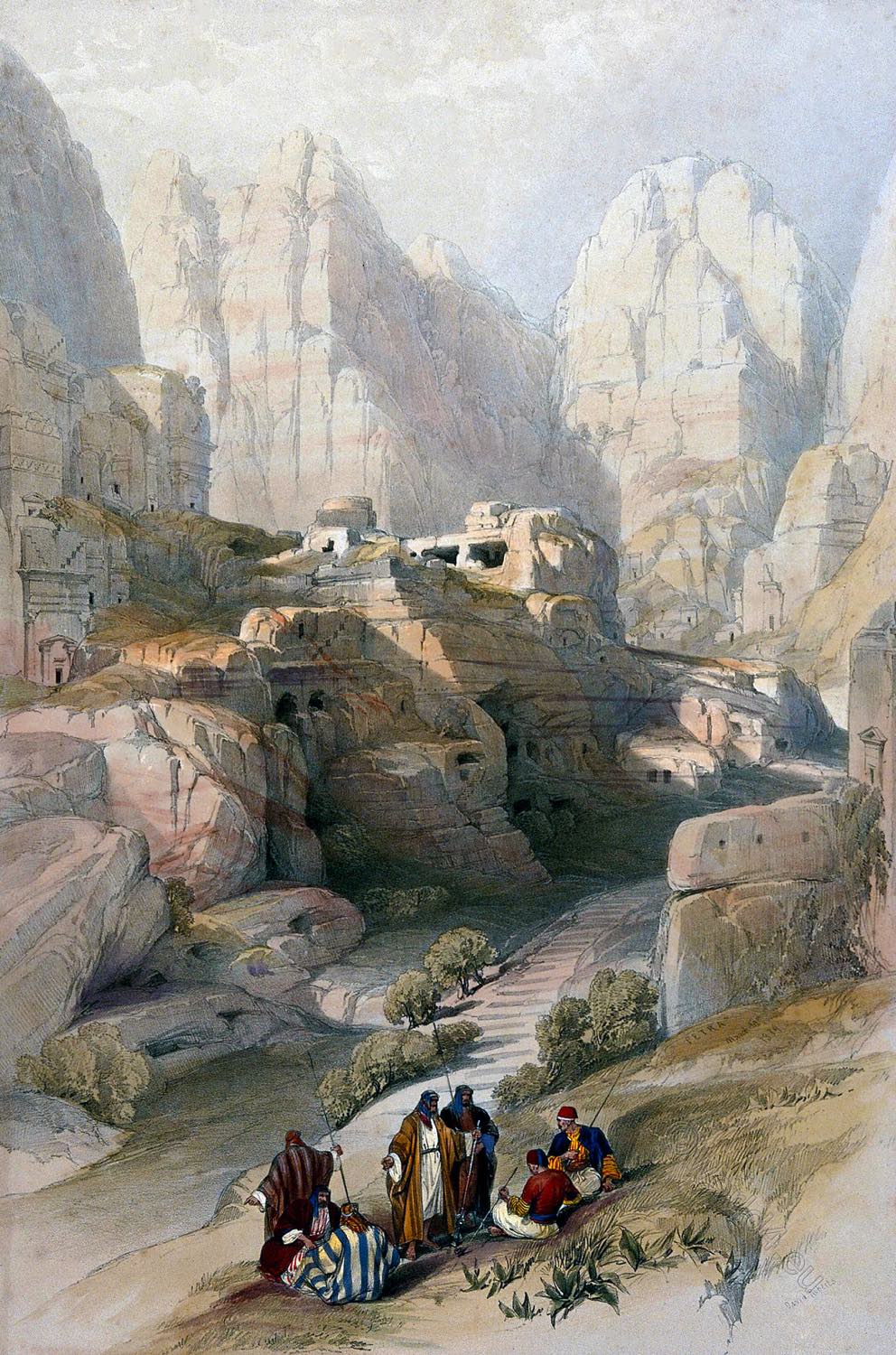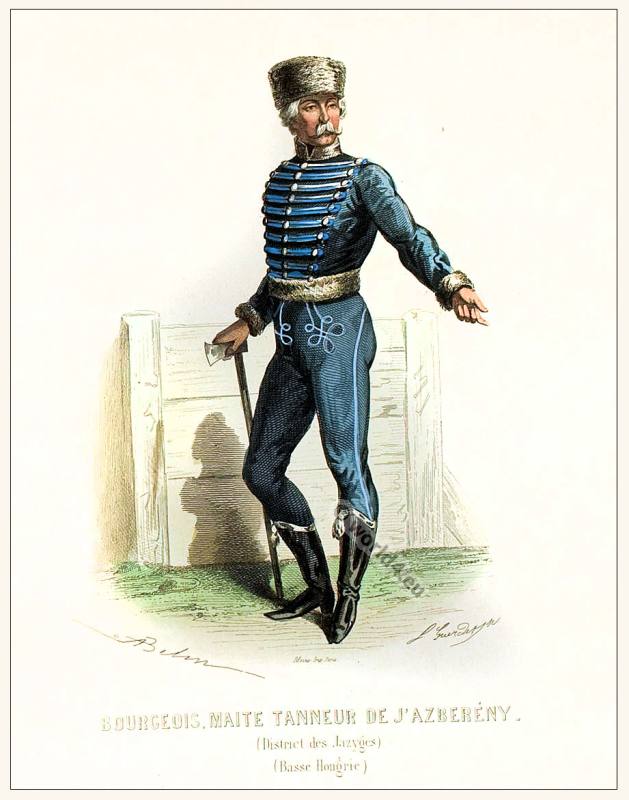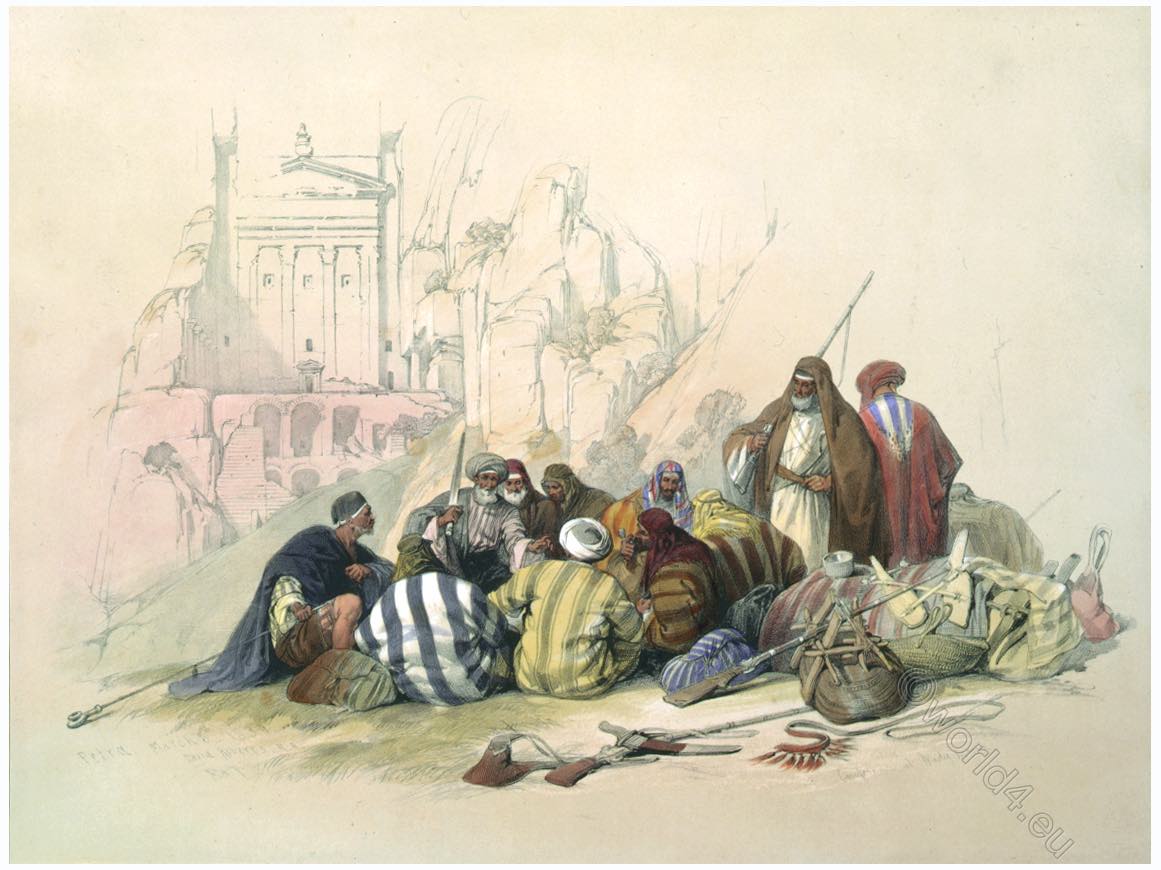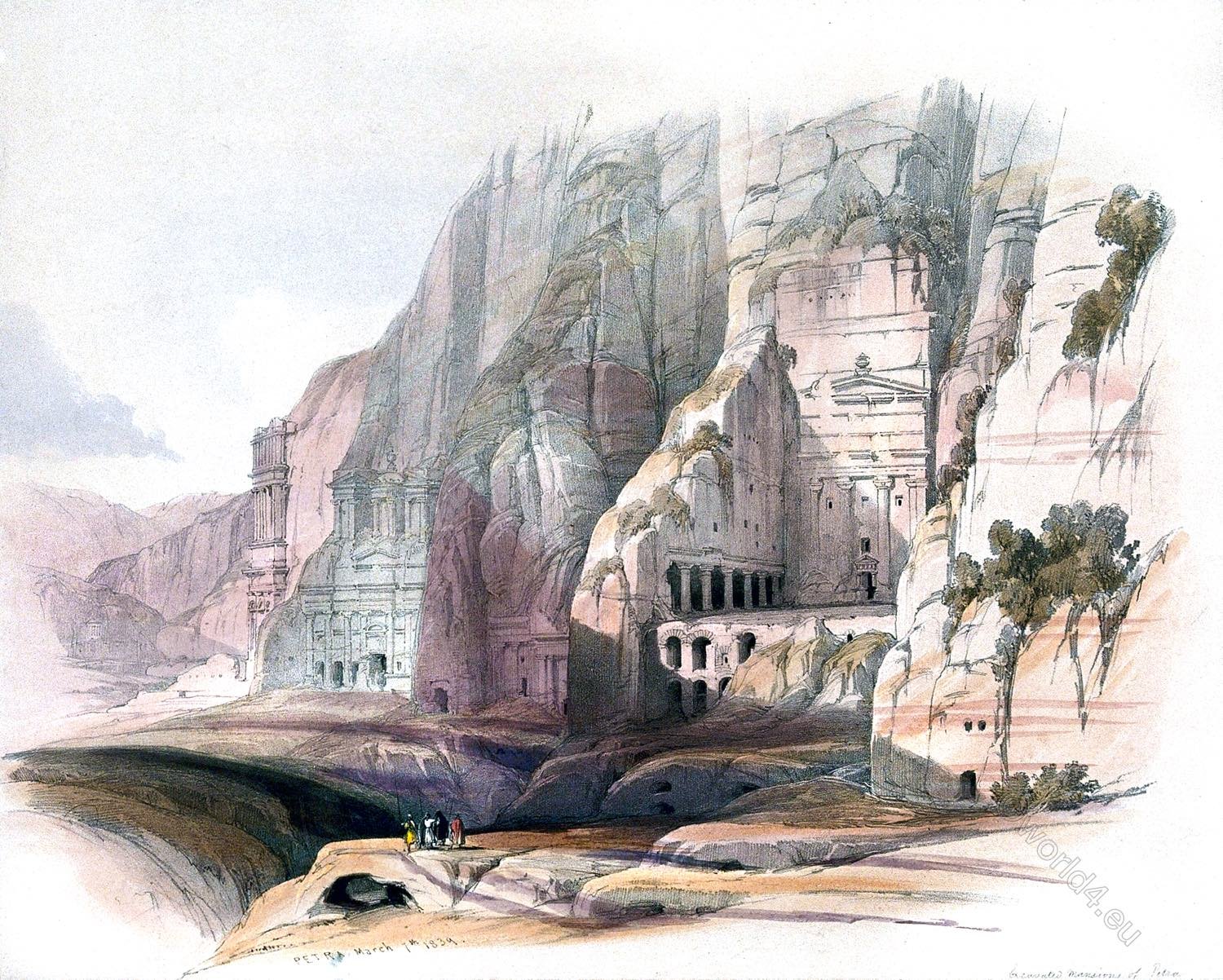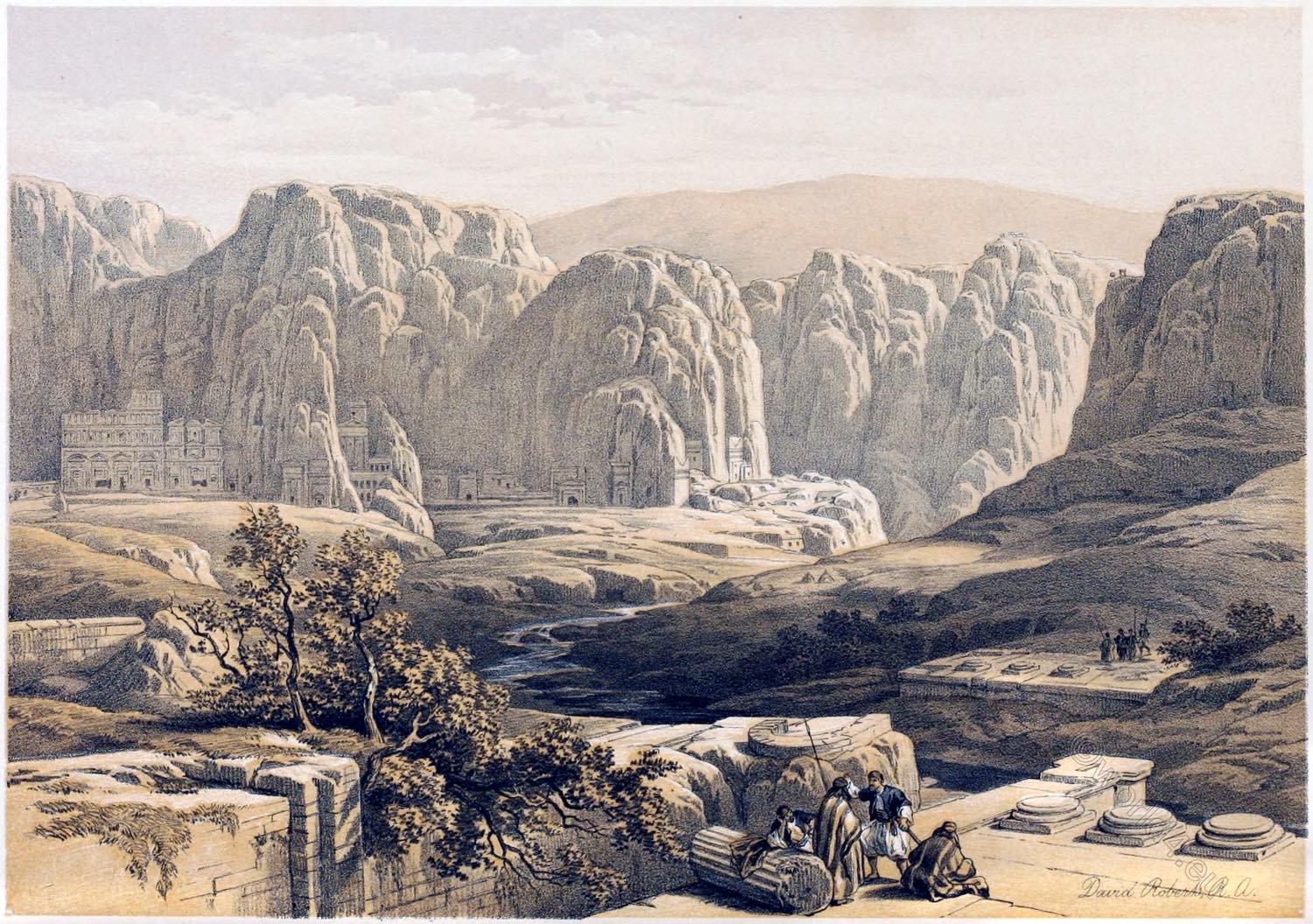
THE LOWER PORTION OF AL KHAZNEH.
This view partially gives the profile of Al-Khazneh. The general architecture is Greek, but mingled with the luxurious fancy and exuberant decoration of Asia; the whole giving the impression of singular energy in the national taste, which could encounter such difficulties, yet surmount them with such success, and combine its triumph over the rudest forms of nature with such refinement of beauty.
Four Corinthian columns, thirty-five feet in height and three in diameter, supporting an entablature or pediment richly ornamented, compose the portico. On each flank stands a pilaster, and in the space between it and the last column is a colossal equestrian group in alto relievo.
The entablature is ornamented with vases, connected by festoons of flowers, and in the centre of the pediment stands an eagle with expanded wings. The superstructure is more fanciful.
It consists of a small circular temple, surrounded with Corinthian pillars, and flanked by two smaller temples of the same order. On the centre one stands the urn from which the building derives its Arab name, the Treasure, as the natives imagine it to contain the gold of Pharaoh, and frequently fire at it, in the hope of fracturing the depository. All the friezes and capitals are very richly sculptured. 1)
The steps to the portico are broken, and covered with grass and wild flowers. One column has been thrown down, and the relieve and statues are much decayed but such is the magnitude of its general scale, and such is its grace, that those defects scarcely strike the eye. The fine colour of the stone, which is a rich rose, and the singular preservation of its most delicate carvings, give it the appearance of having been erected but yesterday.
If the Al-Khazneh owes some of its effect to the suddenness with which it bursts upon the sight, and the contrast which its fanciful design and the freshness of its colour form with the rugged and stern aspect of the surrounding precipices; yet are we not to regard even those circumstances as evincing the singular skill of the designers? The effect is described as fascinating.
“The idea of it,” says Robinson, “was uppermost in my mind during the day and all the night. In the morning I returned, and beheld it with increased admiration. There it stands as it has stood for ages, in beauty and loneliness. Its rich roseate tints, as I bade it farewell, were lighted up and gilded by the beams of the morning sun, and I turned from it at length with an impression which will be effaced only by death.” 2)
The Artist’s farewell to the City touchingly and naturally expresses the influence of the scene: — “The Camels were loaded, and our caravan was in motion. I repeatedly turned to look on this doomed City; so sad a memorial of Divine judgment, yet possessed of a strength which must have scorned all human instruments of destruction; placed in the bosom of impenetrable mountains, with walls so formed by nature, that to them the works of man shrank into insignificance.
Though in the midst of deserts, its climate is not surpassed by any in salubrity; the soil watered by numerous streams and its mountains cultivated to the very summits; the plain below covered with the most splendid temples, and other public buildings, and the rocks themselves so filled with excavations that they resound under the foot.
Yet with all this, and with a population of hundreds of thousands, all now is loneliness; its history is almost unknown, and the wandering Arab attributes its very existence to enchantment.” 3)
1) Kinnear, Cairo, &o. 2) Biblical Researches, ii. 519. 3) Roberts’s Journal.
Source: The Holy Land, Syria, Idumea, Arabia, Egypt, & Nubia, by David Roberts (British, 1796-1864), George Croly, William Brockedon. London: Lithographed, printed and published by Day & Son, lithographers to the Queen. Cate Street, Lincoln’s Inn Fields, 1855.
Discover more from World4 Costume Culture History
Subscribe to get the latest posts sent to your email.

